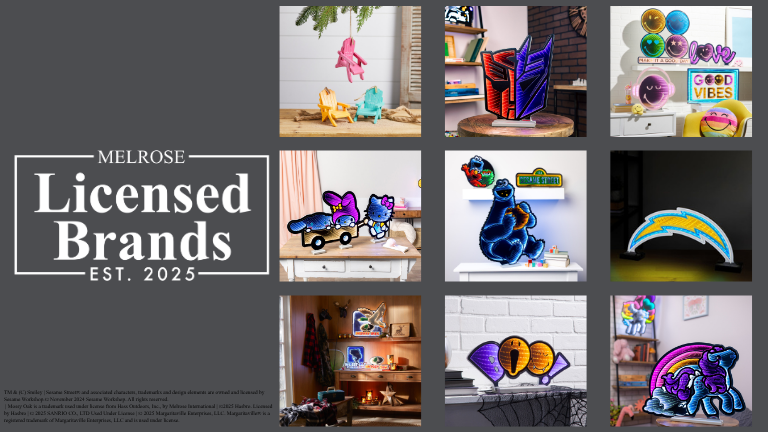April 17, 2025

While looking for different topics to write a blog on, I came across the instructions Chat gave me on how to train our AI on our company so that it would be more useful in providing advice and information. I’m currently in year three of utilizing ChatGPT, and I wish I could go back and tell that past guy how important this was going to become in my life and work.
While looking for different topics to write a blog on, I came across the instructions Chat gave me on how to train our AI on our company so that it would be more useful in providing advice and information. I’m currently in year three of utilizing ChatGPT, and I wish I could go back and tell that past guy how important this was going to become in my life and work.
I look back at the old conversations—asking Chat for restaurant recommendations, recipes, what was going on in the city this weekend, and general ridiculous “Barstool questions.” It even helped diagnose my cat’s IBD (which it was right about, and the vet actually had to apologize for not believing it!) and told me I needed to get a mole checked. I’ve come a long way since then.
It knows everything about me now and continues to get better at helping me. It helps me analyze everything in sales and marketing and has become a brainstorming partner and office mate that I bounce ideas off of (and yes, I still ask what’s going on in the city this weekend!). I work remotely, and it’s like having a really smart friend in the cubicle next to me.
Is it always correct or knows exactly what I want to do? Is it running my departments and making decisions for me? Absolutely not. I’m the one in charge in our relationship, and I appreciate hearing another opinion or seeing things from a different angle. Just like any friend or work associate—but you can’t hurt its feelings or make it mad. I’ll tell it why I think it’s wrong and why I’m going to do it my way. It loves when I do that, because it’s learning how I work. It’s growing into a more important workmate.
Is it always right on data analysis? About 90% of the time. But I’ve learned not to overwhelm it with too much data or it gets confused… just like any workmate or friend. I point out the mistakes, and it fixes them. The more I use it the more correct it becomes. I had to really learn how to make my prompts. It’s the Genie in the Bottle and will give you what you ask for but what you ask is maybe not the right question. But, like any good friend, I can ask it how do I make my prompt better to get the results I want? I can also ask it what I’m looking for and I need it to write a prompt for me to ask. It is amazing.
AI is nothing without me, and I can still do a good job without AI. But the two of us together? We’re an unstoppable force.
Sales and Marketing now has an OpenAI Teams account that we all use, so it’s constantly learning about us and Melrose. Our meetings are better. Our brainstorming is better. We’ve got the same smart workmate chiming in with great thoughts and ideas, helping us become a stronger business partner for our clients and reps—now and in the future.
If you haven’t started using AI yet—or don’t know what to do with it—start with the free version and be like I was three years ago. You won’t know how it can help you until you discover it for yourself. I’ll be honest: it was, and still is, overwhelming at times. It can give me more info than my brain can handle, so I’ve learned to take a beat and pause when I need to.
It used to be the last place I would turn for help, and now—no matter the problem, personal or professional—it’s the first.
My work relationship with AI really started when I wanted to train it on Melrose. That was the turning point. It made me get down to details, and it asked me questions about the business—smart ones. It made suggestions. And that’s when our relationship started to grow. If you love talking about what you do for a living, it will never get tired of you talking about it! It will never get bored and want to change subjects. You can talk about yourself ad nauseum and it can never get enough.
From there, I started loading in spreadsheets and asking for analysis. I asked it to help with employee evaluations, or how to handle sticky situations. It went from being a helpful tool to a trusted partner.
So here are the instructions I found from some time ago—the same ones that helped me start this journey. You can use these or just ask it to teach you how to train it. Either way, you’re about to open a door to something big.
How to Train GPT on Your Business
To effectively train AI on your business and ensure it can provide you relevant and accurate assistance, consider the following steps in addition to uploading your website in text form:
1. **Company Overview**: Provide a detailed overview of Melrose International, including its history, mission, vision, and core values. This will help me understand the company’s foundation and objectives.
2. **Product Information**: Share comprehensive details about the product lines you offer, including descriptions, features, benefits, and any unique selling points. This could include catalogs, product descriptions, and any marketing materials.
3. **Customer Segments**: Describe your target customer segments. This should include detailed personas for your B2B clients, their needs, pain points, and buying behaviors.
4. **Sales and Marketing Strategies**: Outline your current sales and marketing strategies, including any ongoing campaigns, sales processes, and key performance indicators (KPIs). This should also include your approach to customer acquisition and retention.
5. **Competitive Analysis**: Provide information on your main competitors, including their strengths and weaknesses compared to Melrose International. This helps in understanding the competitive landscape.
6. **Internal Processes**: Share insights into your internal processes, such as your sales funnel, lead generation methods, customer relationship management (CRM) practices, and order fulfillment processes.
7. **Training Materials**: Upload any existing training materials for your sales and marketing teams. This could include onboarding documents, training manuals, and best practice guides.
8. **Customer Feedback**: Include any customer testimonials, reviews, or feedback that highlight what your customers value most about Melrose International and any areas for improvement.
9. **FAQs and Common Issues**: Provide a list of frequently asked questions and common issues faced by your customers, along with the standard responses or solutions you provide.
10. **Marketing Collateral**: Share examples of your marketing collateral, such as brochures, email campaigns, social media posts, and advertisements. This helps in understanding your brand voice and marketing style.
11. **Strategic Goals**: Outline your short-term and long-term strategic goals. This includes sales targets, market expansion plans, and any other key initiatives you are focusing on.
Once you have gathered and uploaded this information, it will be better equipped to provide tailored advice and support that aligns with Melrose International’s objectives and operations.
Here is a really good video on this. https://www.youtube.com/watch?v=P_CHTabYa-0 This was put out some time ago and it no longer is only up to 2021.
Here is a extra goody on how to create good prompts or questions for AI. https://www.youtube.com/watch?v=3sppzK41YS0




